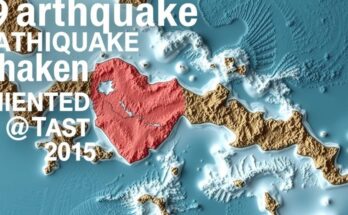This article discusses the recent cease-fire in Lebanon and its implications for broader Middle Eastern peace efforts, particularly in light of ongoing tensions between Israel and Hamas in Gaza and Iran’s nuclear ambitions. President Biden’s administration expresses hope, yet significant obstacles remain, including regional demands for Palestinian statehood and Iran’s role as a destabilizing force.
Following a cease-fire in Lebanon, President Biden expressed optimism for broader peace in the Middle East. However, significant challenges remain as Israel and Hamas continue to differ on a cease-fire agreement in Gaza, while Iran’s nuclear ambitions complicate diplomatic efforts. Regional instability and Iran’s role as a backer of Hezbollah underscore the difficulty of establishing lasting peace, which may be further influenced by the upcoming leadership of Donald J. Trump. Critically, Netanyahu’s emphasis on addressing Iran supports the notion that future negotiations will hinge on curtailing Iran’s nuclear development, a priority for both Israel and the U.S. moving forward.
The cease-fire in Lebanon serves as a potential springboard for peace negotiations in a region marked by historical conflict. While the cessation of hostilities between Israel and Hezbollah is a positive step, the situation in Gaza remains precarious, with negotiations stalled between Israel and Hamas. Additionally, Iran’s continued nuclear activities represent a significant threat to regional stability and complicate efforts for peace. The frameworks for resolving these conflicts may shift depending on U.S. leadership.
In summary, the recent cease-fire in Lebanon, while a step forward, highlights the complexity of achieving peace in the Middle East. The persisting tensions in Gaza and Iran’s nuclear ambitions remain substantial barriers. As the region looks towards the next U.S. administration, the focus will likely shift to addressing Iran’s threat and navigating the demands for Palestinian statehood. Ultimately, the road to comprehensive peace appears challenging yet crucial for long-term stability.
Original Source: www.nytimes.com




